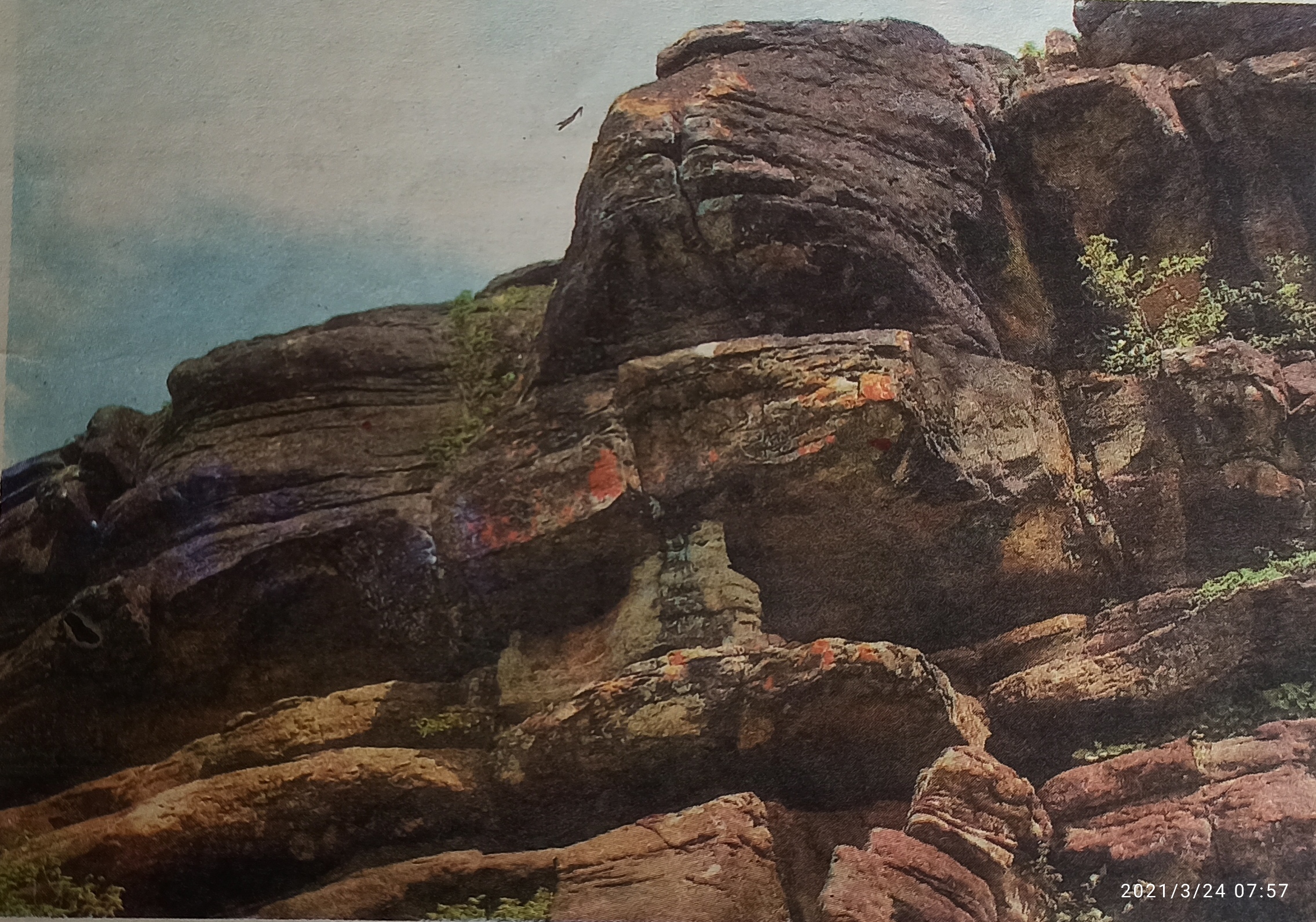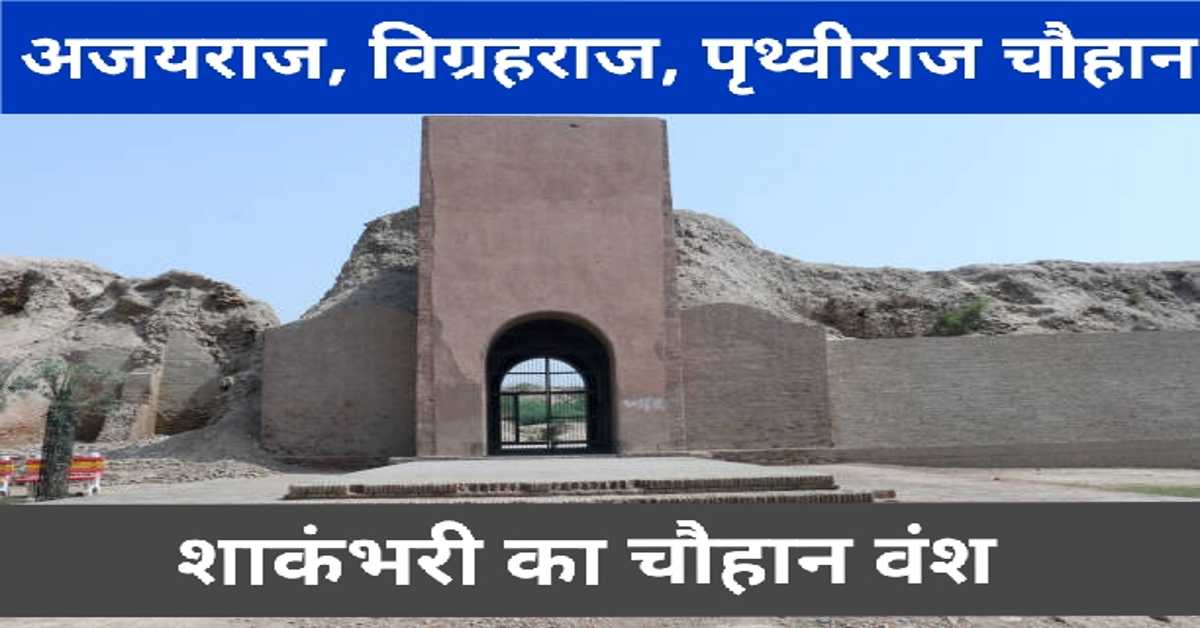
मध्यप्रदेश का प्राचीन इतिहास || Ancient History of Madhya Pradesh
Madhya Pradesh is called 'Heartland of India' , as it is located in the center of India. From the geological point of view, it is called the oldest part of India. This area is older than the Himalayas. At one time this structure was part of the Gondwana Land. The ancient history of Madhya Pradesh is as follows -
प्रागैतिहासिक युग - मध्य प्रदेश के विभिन्न भूखण्डों में उत्खनन एवं खोजों से प्रागैतिहासिक सभ्यता के विषय में जानकारी प्राप्त होती है। मध्य प्रदेश की आदिम प्रजातियाँ नदियों के तटों और गिरी कंदराओं में निवास किया करती थीं। जंगली पशुओं में भैसें, सिंह, हाथी तथा सरीसृप आदि प्रमुख रूप से पाए जाते थे। इनके अतिरिक्त कुछ स्थानों पर 'हिप्पोपोटेमस' के रहने के अवशेष प्राप्त हुए हैं। उस काल के लोग शिकार हेतु नुकीले पत्थरों के औजारों का उपयोग करते थे। मध्यप्रदेश के भोपाल, रायसेन, नेमावर, मोजावाड़ी, छनेरा, महेश्वर, देहगाँव, हंडिया, कबरा, बरखेड़ा, सिघनपुर, पचमढ़ी, आजमगढ़, होशंगाबाद, सागर एवं मंदसौर की अनेक स्थानों पर इन लोगों की निवास करने के प्रमाण प्राप्त हुए हैं। इस काल के लोगों में कलात्मक अभिरुचि थी। होशंगाबाद के पास की गुफाओं, भोपाल के पास भीमबेटका की कंदराओं और सागर के पास पहाड़ियों से शैलचित्र प्राप्त हुए हैं, जो कि उनकी कलात्मक अभिरुचि के प्रमाण हैं। शैलचित्र मंदसौर की शिवनी नदी के निकट की पहाड़ियों, रायसेन, नरसिंहगढ़, पन्ना, रीवा, आजमगढ़, रायगढ़ तथा अंबिकापुर के कंदराओं में प्राप्त हुए हैं।
Prehistoric era - Excavations and discoveries in various plots of Madhya Pradesh provide information about prehistoric civilization. The primitive species of Madhya Pradesh inhabited the banks of the rivers and the fallen kandaras. Buffaloes, lions, elephants and reptiles were found predominantly in the wild animals. Apart from these, remains of 'Hippopotamus' have been found at some places. People of that period used pointed stone tools for hunting. Evidence has been obtained of these people residing at several places in Bhopal, Raisen, Nemawar, Mojawadi, Chhanera, Maheshwar, Dehgaon, Handia, Kabra, Barkheda, Siganpur, Pachmarhi, Azamgarh, Hoshangabad, Sagar and Mandsaur in Madhya Pradesh. People of this period had artistic interest. Rock paintings have been received from the caves near Hoshangabad, Bhimbetka Kandra near Bhopal and the hills near Sagar, which are evidences of his artistic interest. Rock paintings have been found in the hills near the Shivni river of Mandsaur, Kandaras of Raisen, Narsinghgarh, Panna, Rewa, Azamgarh, Raigad and Ambikapur.
पाषाणकाल और ताम्रपाषाण (Paleolithic and Copperolithic) - इस काल को चार भागों में बाँटा जा सकता है। (This period can be divided into four parts) -
1. पुरापाषाण काल (Palaeolithic Age)
2. मध्यपाषाण काल (Medieval stone Age)
3. उत्तर पाषाण काल (Poststone Age)
4. नवपाषाण काल (New Stone Age)
पुरापाषाण काल (Paleolithic Age) - इस काल में बिना बत्थे या हत्थे वाले यंत्र का प्रयोग किया जाता था। उदाहरण खुरचनी, हस्तकुठार आदि। इस काल के अवशेष नर्मदा, चंबल, सोनार, पार्वती, बेतवा, हिरण वेनगंगा आदि नदियों की घाटियों में प्राप्त हुए हैं।
In this period, instruments without batches or weapons were used. Examples Scraper, Handicraft etc. Remains of this period have been found in the valleys of rivers like Narmada, Chambal, Sonar, Parvati, Betwa, Deer Venganga etc.
मध्य पाषाण काल (Medieval stone Age)- इस काल के औजार उच्च कोटि के पत्थरों से बनाए गए थे। ये आकार में छोटे होते थे।
The tools of this period were made from high quality stones. They were small in size.
उत्तर पाषाण काल (Poststone Age)- इस काल को 'लघु औजार पाषाण काल' के नाम से भी जाना जाता है। इस काल के प्रमुख औजार शल्क, बेधनी, खुरचनी थे। इस काल के लोग पशु - पक्षी तथा मछली का भोजन किया करते थे। इस काल के प्रमुख क्षेत्र पूर्वी निमाण, शहडोल, मंदसौर, होशंगाबाद, सीहोर, रीवा, मंडला, उज्जैन छिंदवाड़ा, छतरपुर थे।
This period is also known as 'Small Tools Stone Age' . The major tools of this period were shark, bedhni, scraper. People of this period used to eat animal and bird and fish. The major areas of this period were Eastern Niman, Shahdol, Mandsaur, Hoshangabad, Sehore, Rewa, Mandla, Ujjain Chhindwara, Chhatarpur.
नवपाषाण काल (New Stone Age)- इस काल में मानव ने कृषि करना एवं भोजन उगाना सीख लिया था। इस काल में मृदभांड निर्माण, झोपड़ी बनाकर निवास करना, वस्त्रों का प्रयोग आदि प्रारंभ हो चुके थे। 'ऐरण' इस काल का प्रमुख औजार था। यह जबलपुर, सागर, दमोह से प्राप्त हुआ है।
During this period, humans had learned to do agriculture and grow food. In this period, pottery construction, hut and residence, use of clothes etc. were started. 'Aaran' was the major tool of this period. It is derived from Jabalpur, Sagar, Damoh.
ताम्र पाषाण काल (Copperolithic age)- इस काल की अवधि लगभग 2800 से 700 ई.पू. की है। इस काल में मानव ने पत्थर के साथ-2 तांबे का प्रयोग भी करना सीख लिया था। यह सभ्यता मोहनजोदड़ो तथा हड़प्पा के समकालीन थे। इस सभ्यता का विकास नर्मदा नदी के तट पर, जबलपुर, बालाघाट में हुआ था। इस सभ्यता के प्रमाण मध्यप्रदेश के मालवा के कायथा, ऐरण, आवरा, नवदाटोली, बसेनगर, डॉगवाला से प्राप्त हुए हैं। मध्य प्रदेश की पहली ताम्र पाषाण कालीन बस्ती 'कायथा' थी। डॉ. सांकरिया ने महेश्वर, नवदाटोली की खोज की थी। डॉक्टर वी. श्री वाकणकर में नागदा, कायथा की खोज की थी। इस काल में घुमक्कड़ जीवन शैली समाप्त हो चुकी थी। उसके स्थान पर खेती और पशुपालन प्रारंभ हो गया था। उस काल के प्रमुख पालतू पशुओं में गाय, कुत्ता, बकरी आदि पाले जाते थे।
The period of this period was around 2800 to 700 BC. Has During this period, humans had also learned to use copper with stone. This civilization was contemporary to Mohenjodaro and Harappa. This civilization was developed on the banks of river Narmada, at Jabalpur, Balaghat. Evidence of this civilization has been obtained from Kayatha, Airan, Awaara, Navdatoli, Basenagar, Dogwala of Malwa in Madhya Pradesh. The first copper stone settlement in Madhya Pradesh was 'Kayatha' . Dr. Sankaria discovered Maheshwar, Navdatoli. Nagda, Kayatha was discovered in Doctor V. Sri Vakankar . The stroller lifestyle was over in this period. In its place farming and animal husbandry started. Cows, dogs, goats etc. were reared among the major domestic animals of that period.
RF competition
INFOSRF.COM
संबंधित जानकारी नीचे देखें।
(Watch related information below) 👇🏻

आशा है, उपरोक्त जानकारी उपयोगी एवं महत्वपूर्ण होगी।
(I hope the above information will be useful and important. )
Thank you.
लेखक
(Writer)
infosrf.com


.jpg)





